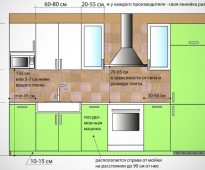 How to make the size of kitchen cabinets (drawings, tips).
How to make the size of kitchen cabinets (drawings, tips).
Standard sizes of kitchen cabinets
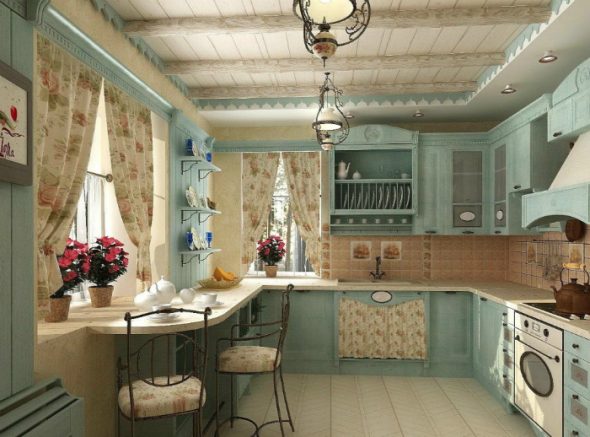
Cozy kitchen in bright colors with elegant furniture, light curtains, decorated with floral print
In the kitchen, all family members are looking for coziness and comfort. When else can you relax, if not during the meal? Therefore, the selection of furniture for the kitchen is important, and the selection of furniture elements for the kitchen should be given no less attention than a bedroom set. So, you need to properly organize the space in your kitchen. Before contacting furniture manufacturers with questions, the owners decide for themselves whether standard-sized wardrobes are suitable for their kitchen space, or have to work with the designer and order something individual. There are kitchens, both too small and large - full dining. In any case, there is a solution for any room.
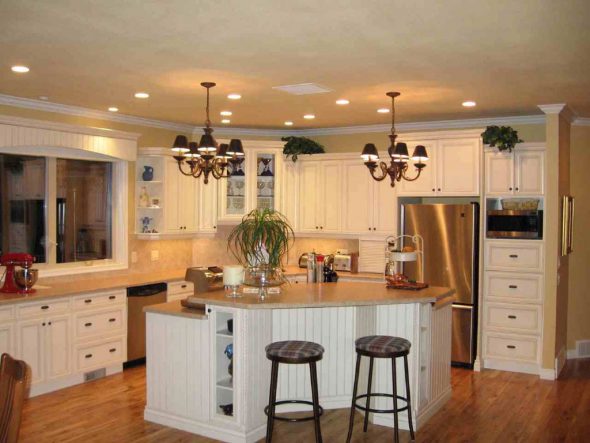
Beautiful large white kitchen with comfortable furniture and an island in the center.
Standard kitchen sizes are used in factories, in order to reduce the time and money required for furniture production. After you have found a company for ordering furniture, a specially trained person comes, takes all the necessary measurements, checks what is needed for the project. However, not only the room and layout features are taken into account, the choice of the kitchen is also influenced by the taste preferences of the owners, the growth of family members, the design of the future interior, the presence of a particular embedded technology. Everything is taken into account to the smallest detail, because the kitchen should be comfortable to use, an aesthetic appearance should be provided.

Country Kitchen Lounge
For those who want to save money on kitchen equipment, there is such a popular innovative solution as modular systems. Kitchen sets are assembled in this case from ready-made cabinets, which have standard dimensions and parameters. When ordering modular kitchens, the moment is very important - each manufacturer has its own step in the production of modules from 5 to 20 cm. For example, one factory produces kitchen modules 45, 60 and 90 cm wide, and another 40, 80, 120 and so on. d. This factor is taken into account when buying household appliances and to determine the total length of furniture.
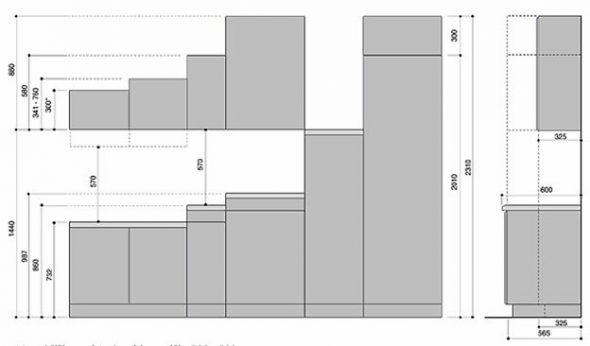
Sample sizes for standard modular kitchen cabinets
Content
Work Triangle Rule
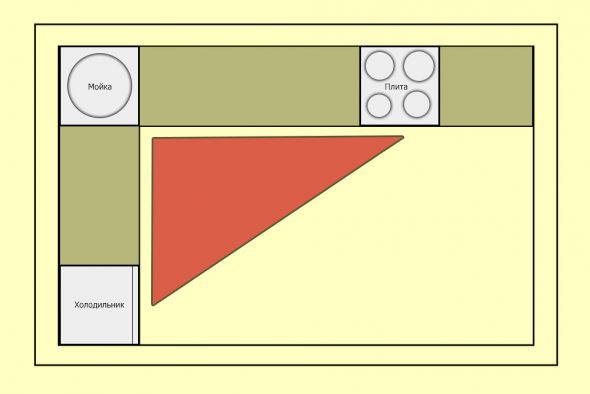
The rule of the working triangle in the kitchen, uniting the most important areas in the kitchen
However, the above nuances are not all that is needed for the proper organization of kitchen space. Still need to use the rule of the working triangle.
All components of furniture for the kitchen, ranging from cabinets and pumping sink, must be placed on the basis of certain rules of ergonomics, safety and convenience. It is not for nothing that there is the science of feng shui, whose laws are taken into account by many designers. Its principles can be correlated with the rule of the working triangle, and it is easy to explain the location of things in one place or another.
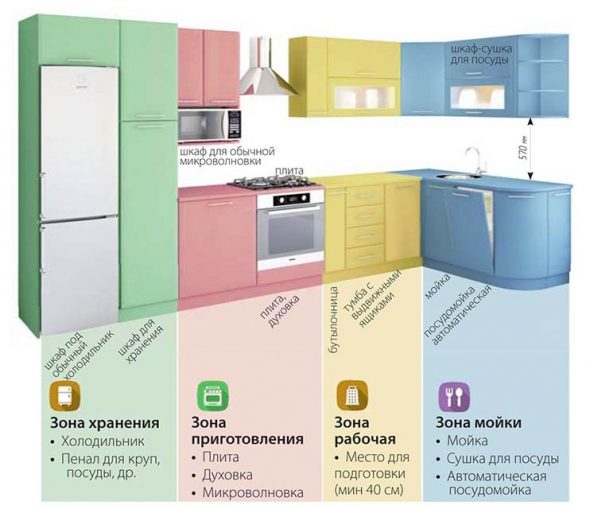
Functional and ergonomic kitchen interior
The main areas in the working triangle are:
- cooking surface in the form of stove, countertop, microwave;
- a zone where products are stored for a long time, its elements are a freezer, a refrigerator;
- "Clean" area, including kitchen sink and dishwasher.
It may seem attractive to many to install a sink next to a stove, as well as a refrigerator in the sink. But such an arrangement of technology is not justified. The refrigerator will be contaminated all the time, and the fat during the cooking process will splash the washed dishes. Water from the tap will fall on a hot griddle. This is inconvenient, impractical and insecure. No wonder in Feng Shui can not be placed elements of the elements of fire and water in close proximity to each other.
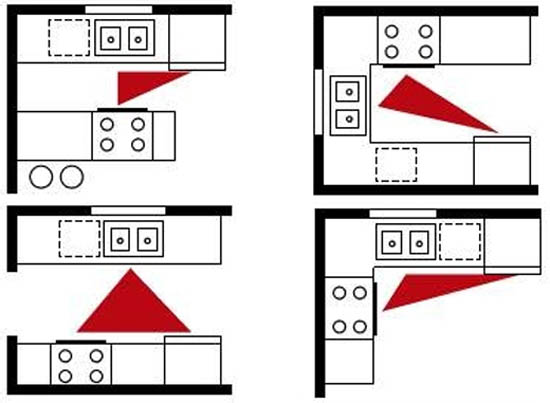
Typical designs of kitchen sets, built using the triangle rule
Appliances affecting kitchen choices
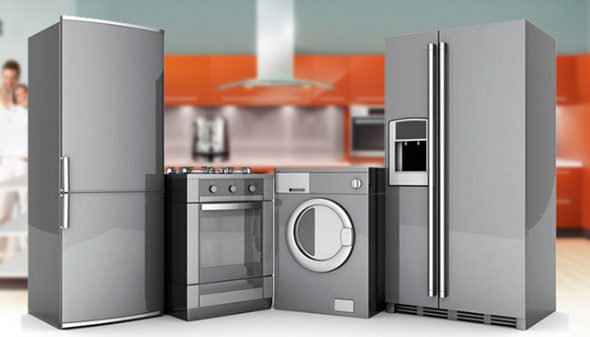
An example of built-in appliances for kitchen furniture
To get the most optimal design of kitchen furniture, you need to initially decide what built-in appliances will be used now or a little later.
To embedded technology include:
- washing machine;
- dishwasher;
- fridge;
- hob and oven, or a standard stove, etc.
The designer must be warned in advance about the dimensions of the built-in appliances, which are selected for the kitchen.
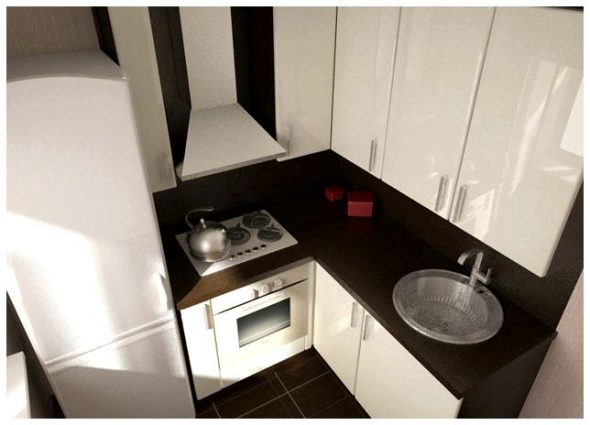
Location near the stove and refrigerator in a very small kitchen
Not recommended location near the stove and refrigerator. Since it is heated, the energy consumption of the refrigerator will increase, which can damage it. The distance from the worktop and to the refrigerator should also be thought out, because often it gets sprayed during the cooking process, which complicates the care of the kitchen. Between the refrigerator and the table top you need to provide a distance of at least 15 cm.
Do not forget about the hood. It has the following accommodation standards (from it to the hob):
- for electric 70-75 cm;
- for the gas stove 75-80 cm.

Hood on the gas stove for the bright green kitchen
As for the ovens, to ensure quick, trouble-free opening and closing of the door, it must be installed at a distance of 1 cm from other kitchen cabinets. The oven is installed in the pencil case at eye height. This is necessary to ensure comfortable operation, and so that children cannot reach it.

Built-in oven at a comfortable height
Types of kitchen cabinets
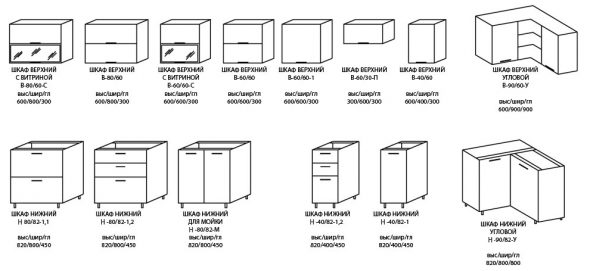
Types of kitchen cabinets depending on the type of location
Depending on the type of arrangement of kitchen cabinets, they are divided into:
- floor standing;
- wall mounted;
- angular.
Outdoor
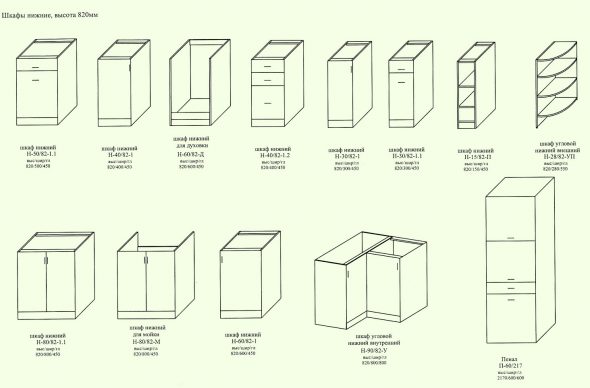
Floor cabinets with sizes
Such kitchen cabinets are placed on the floor, often called thumbs, cabinets, floor modules, etc. Legs for placement can be decorative or technical. In the latter case, they hide behind the base. Floor kitchen cabinets are needed in order to store heavy and large objects, to build in them household appliances. The main difference from the mounted modules is their depth is 60 cm. In the wall - 30-40 cm. In the floor stands the thickness of the table top is taken into account.
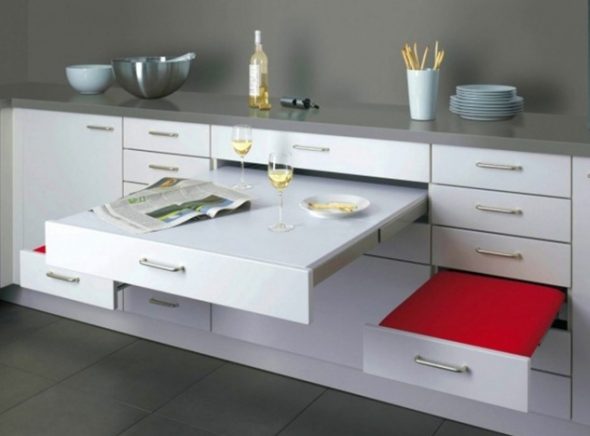
Convenient floor cabinets with drawers of different sizes in the interior
Wall mounted
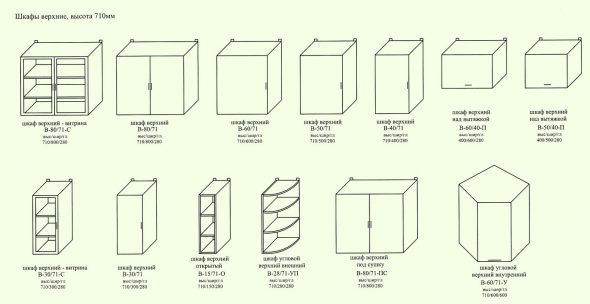
Hinged kitchen cabinets with sizes
Wall kitchen cabinets are fixed on the wall. They are also known by such names as suspended, hinged shelves or modules. Hinged kitchen cabinets are lightweight and smaller than the floor. Doors can be made of wood and glass, which creates a different visual effect.
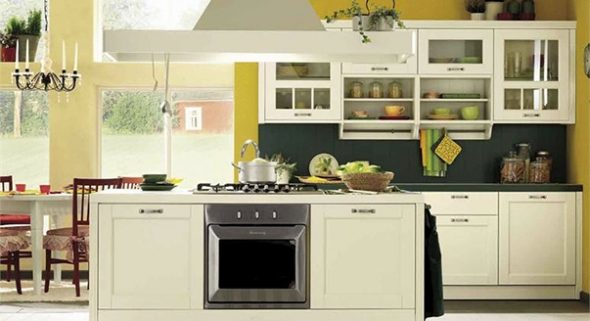
Floor and wall cabinets in the interior of a spacious kitchen
Corner

Corner kitchen cupboard with dimensions
By design, this is the most sophisticated kitchen cabinets. They start all the miscalculations and additions of the other modules. Even with the installation, furniture makers start from the corner kitchen cabinets. In order to somehow understand the project under development, you need to understand the size of the upper and lower kitchen modules.Since the sinks are always placed in the corner modules, you need to study the standard sizes of sinks in order to properly choose it to the parameters of the corner kitchen cabinet.
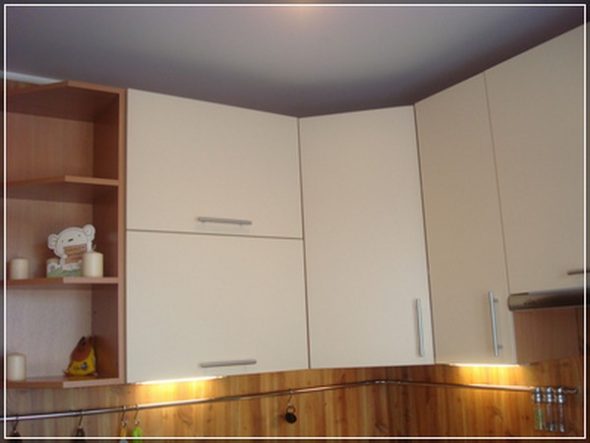
Corner hinged white wardrobe in the interior of the kitchen
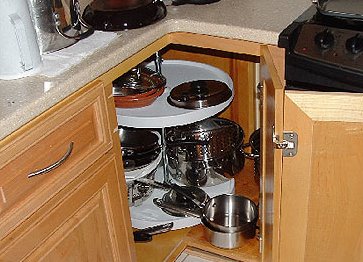
Lower corner cabinet to the kitchen with convenient built-in storage
Sizes of kitchen cabinets
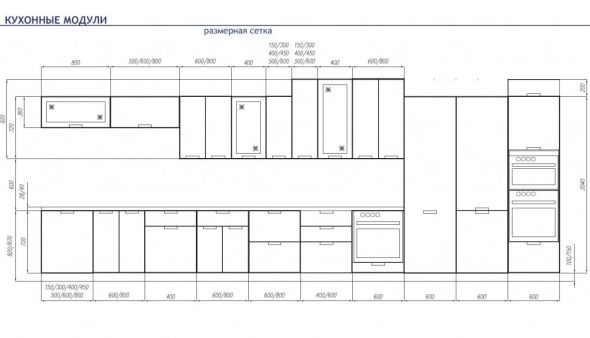
Dimensional grid of kitchen modules of different types with dimensions
The width, height, depth of wall modules and floor stands are considered separately, since there are some differences. This is especially true of depth. Now consider the standards of kitchen cabinets.
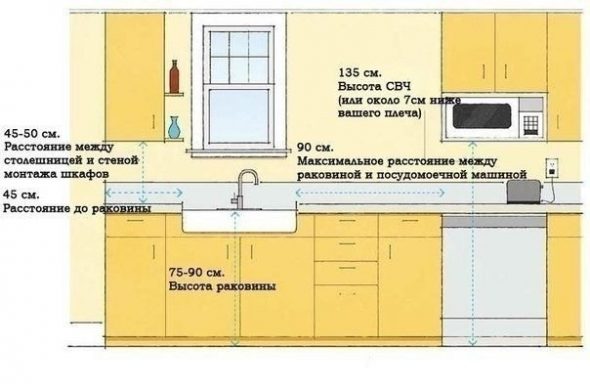
Additional for convenient and ergonomic arrangement of equipment, washing and cabinets
Sizes of floor kitchen curbstones

The optimal size of kitchen furniture and kitchen aisles
The most optimal height - 850 mm for hostesses of average height. In this case, this height is:
- Cap 100 mm;
- Module framework (base) - 720 mm;
- Tabletop thickness - 280 mm.
For tall women, the height of floor stands can be increased to 900 mm.
About the standard depth already written above:
- the standard depth of the lower kitchen cabinets is 700-900 mm;
- the standard depth of the kitchen cupboards is 350-450 mm.
Wall cabinets standards
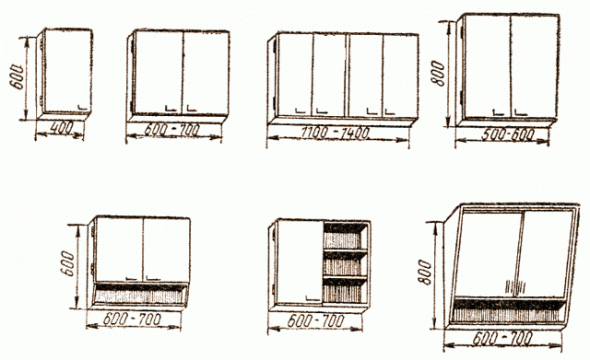
Standard kitchen cabinets with dimensions
The height of the front facade is 700–900 mm. The length of the mounted elements corresponds to the length of the bottom. It is important to take into account the distance between the bottom of the upper modules and the surface of the table top at the bottom should be at least 450 mm to ensure comfort and convenience when cooking. The most optimal height between the cooking surface and the hood is 750 mm. The height of the drawers in the kitchen is:
- small ones - 14 cm;
- medium - 28 cm;
- large - 35 cm
Sizes of corner kitchen cabinets, standard
- The side walls in the corner kitchen cabinets, are parallel to the walls in the kitchen, and are equal to 600 mm both.
- The side walls of the corner modules, which are adjacent to the adjacent drawers, are 315 mm both.
- The front part is closed by a door 380 mm wide.
- The rear part is about 165 mm.
Standard sizes of kitchen cabinets
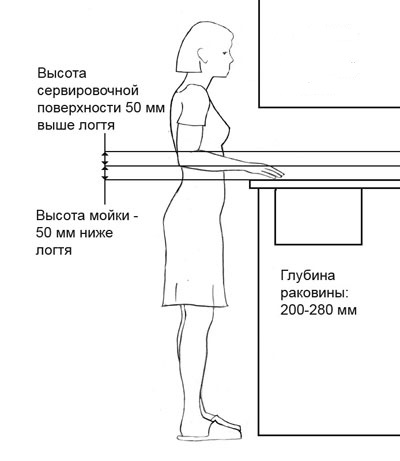
Location of the sink and serving surface depending on the growth of the hostess of the kitchen
During orders, standard sizes are more often used. It is important that all elements are correctly arranged, then even a small kitchen will look spectacular and seem more spacious than it is. If you do not take into account the elementary rules, the kitchen space will resemble an ordinary room with all kinds of piles. If we take into account the standard size of the modules, you can easily assemble a convenient and practical kitchen.
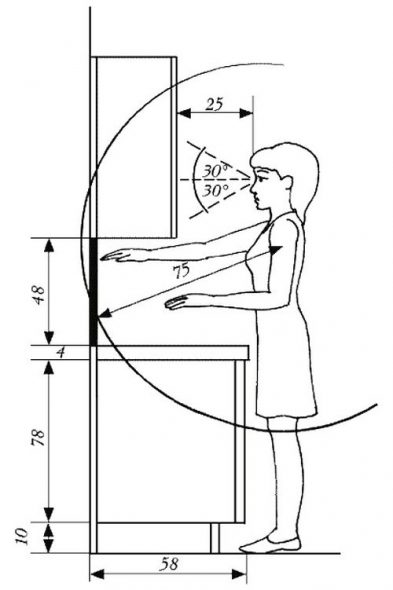
The size of the functional placement of furniture with the necessary visibility zone and access to individual elements of the kitchen
| Module Name | Width, mm | Height mm | Depth mm |
| Floor | 450 with the 1st door and 600-900 with 2 | 700-900 | 600 |
| Wall | 450 with 1st door 600-900 with 2 | 700-900 | 300 |
| Angular | 400 (front door), 170 - rear parallel wall of the cabinet | 700-900 | 600 and 600
600 and 420 |
Video: Standard Kitchen Sizes
 How to make the size of kitchen cabinets (drawings, tips).
How to make the size of kitchen cabinets (drawings, tips).
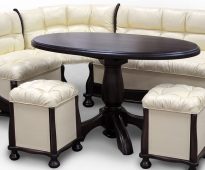 Assembling a kitchenette: rules for assembling cabinet furniture
Assembling a kitchenette: rules for assembling cabinet furniture
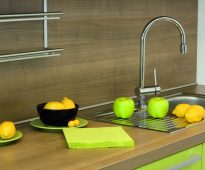 Why do you need aluminum skirting for the countertop?
Why do you need aluminum skirting for the countertop?
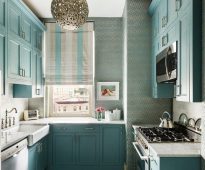 Kitchen in which the cabinets are up to the ceiling
Kitchen in which the cabinets are up to the ceiling
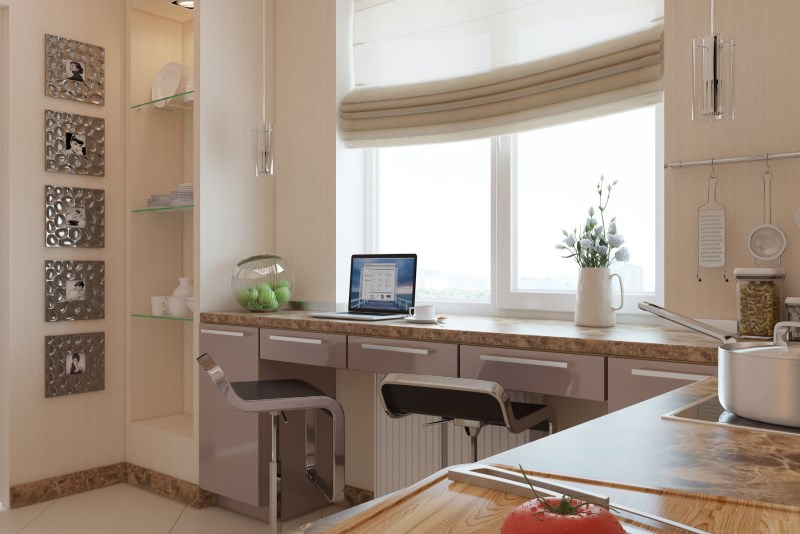 Sill-countertop in the kitchen with their own hands.
Sill-countertop in the kitchen with their own hands.
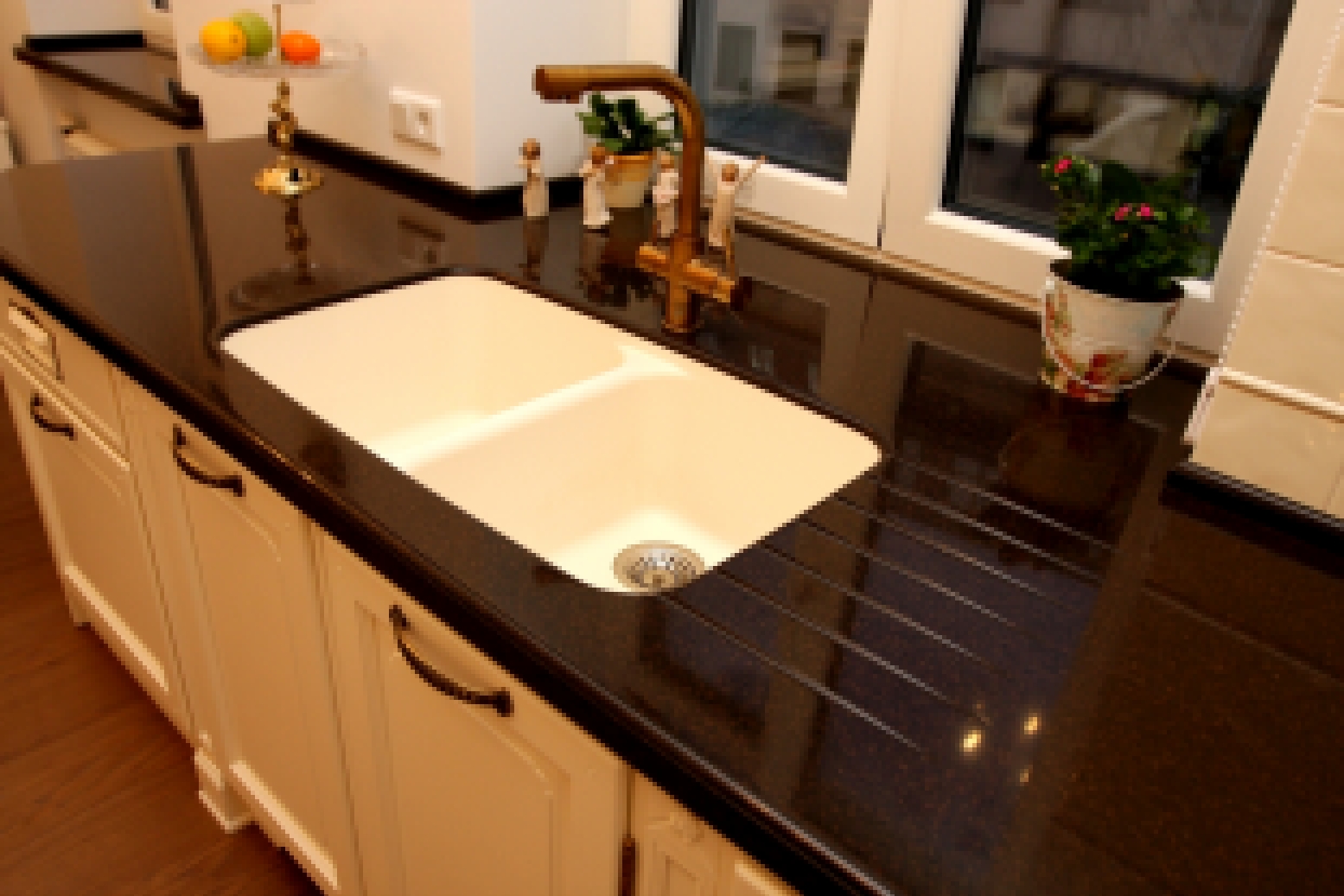 How to choose the kitchen countertop
How to choose the kitchen countertop






